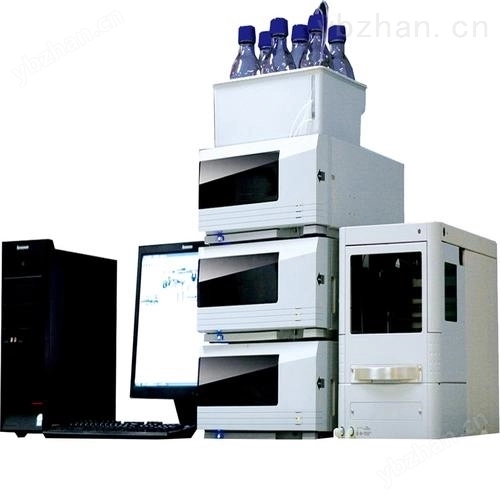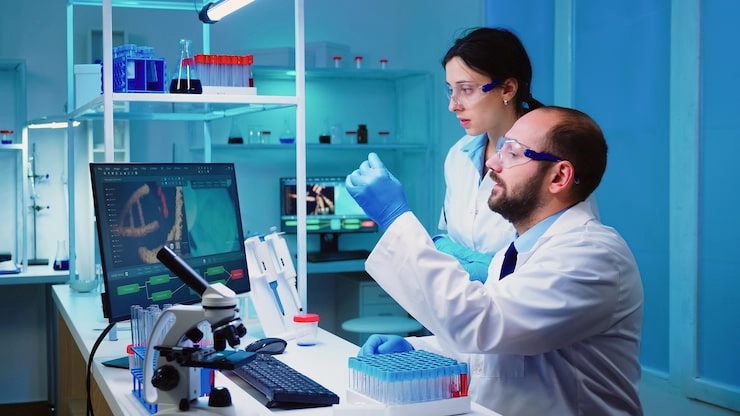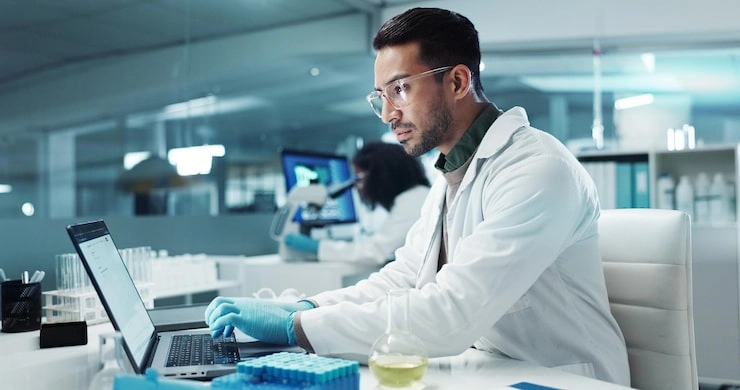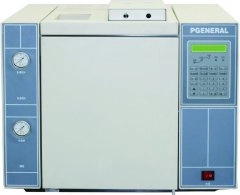
High-Performance Liquid Chromatography (HPLC) has become a key part of modern analytical chemistry, giving strong abilities for the separation, finding, and measurement of chemical components. Industries want more. They need higher throughput, precision, and reproducibility. Thus, advanced modeling techniques are appearing as vital tools to boost the performance and efficiency of HPLC systems.
Overview of High-Performance Liquid Chromatography (HPLC)
High-Performance Liquid Chromatography (HPLC) is a special analytical method used to separate, find, and measure components in complex mixes. It works based on the principle of different interactions between analytes and the mobile and stationary phases inside a chromatographic column.
Key Principles and Operation of HPLC Systems
First of all, HPLC is a type of partition chromatography that uses the partitioning of substances between the still and moving phases. The mobile phase, which is often a solvent or mix of solvents, flows under high pressure. It carries the sample. It moves it through a column packed with a solid stationary phase like silica or alumina. Components get separated based on their special chemical interactions and are then found by UV-visible, fluorescence, or electrochemical detectors.
Core Components and Functions in HPLC
The usual HPLC system has several very important components: a high-pressure pump, solvent tanks with their valves, filters, connectors, injectors, detectors, and a Chromatography Data System (CDS). Each part has a specific job. For example, pumps maintain flow rates, injectors add the sample, detectors grab elution signals, and the CDS processes the final results.
แอปพลิเคชันในอุตสาหกรรม
HPLC’s flexibility is seen across many sectors. It is used in quality control in the pharmaceutical industry to find and measure compounds in complex mixtures. What’s more, in the area of food science, HPLC is used to find nutritional parts such as carbohydrates, proteins, fats, vitamins, and minerals. Environmental analysts depend on HPLC for finding pollutants, while forensic experts use it to look at biological samples for toxins or drugs.
Challenges in Traditional HPLC Method Development
Despite its good points, normal HPLC has several challenges that get in the way of top performance.
Limitations in Peak Resolution and Selectivity
Getting good resolution between peaks that are close together can be hard. This is because of the limited selectivity of stationary phases. Or, the mobile phase composition might not be right. This becomes a big problem when analyzing complex mixes like biological fluids or environmental extracts.
Time-Intensive Method Optimization
Making a strong HPLC method needs a lot of trial-and-error experimentation. It is a slow process. Analysts often change multiple variables—like gradient profile, pH, or temperature—by hand, which is both time-consuming and uses a lot of resources.
Reproducibility and System Variability Concerns
System-to-system differences can affect reproducibility. This might be due to hardware configuration changes. Or, it could be from column aging. Even tiny changes in flow rate or temperature can greatly affect retention times and peak shapes.
Role of Advanced Modeling in Enhancing HPLC Performance
To fix these limits, computational modeling gives transformative benefits in making chromatographic processes smoother.
Benefits of Computational Modeling in Chromatographic Design
Modeling allows for virtual tests by simulating chromatographic behavior under different conditions. This method reduces physical tests. It saves resources. It also speeds up method development cycles.
Predictive Capabilities for Retention Time and Separation Efficiency
Advanced models can guess retention times based on molecular properties and system factors. These guesses help pre-screen conditions. They find those that are likely to give the best resolution and peak symmetry.
Integration with Experimental Data for Enhanced Accuracy
Mixing computational guesses with real data makes the models more dependable. This hybrid method supports continuous improvement. Here, real-world measurements are used to fine-tune simulation outputs.
Types of Modeling Techniques Applied to HPLC
A broad variety of modeling strategies—from basic theories to AI-driven algorithms—can be applied to make HPLC methods better.
Mechanistic Models for Separation Prediction
Mechanistic models give insights into chromatographic processes based on physical chemistry rules.
Plate Theory and Rate Theory Models
These models describe how a substance moves through columns. The plate theory imagines the column as separate equilibrium stages. On the other hand, rate theory considers the mass transfer dynamics that affect peak broadening, including things like eddy diffusion, longitudinal molecular diffusion, and mass transfer resistance.
Thermodynamic-Based Retention Models
These models connect retention time to thermodynamic factors like enthalpy and entropy. This is often described by the van’t Hoff equation. So, this helps in understanding temperature effects on separation.
Statistical and Empirical Models
Empirical models use experimental data to fit mathematical relationships, but they don’t always need to explain the reasons behind them.
Response Surface Methodology (RSM)
RSM is used a lot to check interactions among many variables (e.g., pH, solvent ratio). It determines the best settings. This is so that resolution is maximized or runtime is minimized.
Design of Experiments (DoE) Approaches
DoE frameworks permit a systematic check of factor effects using few experimental runs. This structured method boosts the reproducibility and strength of method development.
Machine Learning and AI-Based Approaches
With more and more data available, machine learning brings great tools for pattern recognition and prediction.
Regression Algorithms for Retention Prediction
Regression algorithms like linear regression, support vector machines (SVM), and random forests have been used. They estimate retention times. They do this based on molecular descriptors.
Neural Networks for Pattern Recognition in Complex Matrices
Artificial neural networks can handle nonlinear relationships among variables. This allows them to predict chromatographic outcomes. They can do this from very complex datasets, like those from biological samples.
Multidimensional Modeling Strategies
To handle complex analytical challenges, mixing different modeling strategies is often needed.
Combining Physical-Chemical Parameters with Statistical Tools
Using thermodynamic models along with RSM or DoE allows for both a theoretical understanding and a practical optimization under real-world limits.
Optimizing Mobile Phase Composition and Gradient Profiles
Modeling tools help a lot. They fine-tune solvent gradients and compositions. They do this to best use analyte polarity differences—which is very important in reverse-phase HPLC applications.
Addressing Complex Sample Matrices Using Hybrid Models
Hybrid models are very useful. They integrate mechanistic rules with machine learning. Because of this, they can effectively handle matrix interferences found in pharmaceutical formulas or environmental samples.
Software Tools Supporting Advanced HPLC Modeling
Different software platforms have come out to support these modeling abilities.
Commercially Available Platforms for Simulation and Optimization
Commercial tools like DryLab®, ACD/Labs®, or ChromSword® provide user-friendly interfaces for simulating chromatograms under different parameters, allowing for visual optimization workflows.
Open-Source Tools for Custom Model Development
For advanced users who need flexibility, open-source programming environments are available. Think of Python. With libraries like SciPy or TensorFlow, it allows building custom models made for specific research needs.
Integration with Instrument Control Software
Some platforms connect directly with instrument control software. This creates a feedback loop. This enables real-time interaction between prediction and execution, which speeds up method validation cycles.
Practical Considerations in Implementing Modeling Techniques
Despite their promise, putting modeling strategies into practice with success requires good planning.
Data Requirements for Reliable Model Building
Quality input data is vital. Really, it’s essential. Models must be trained on representative datasets that include relevant analyte types, matrix compositions, and chromatographic conditions.
Calibration, Validation, and Model Maintenance
Like any analytical method, models need calibration against known standards. Continuous validation makes sure predictive accuracy stays high over time as system conditions change.
Training Requirements for Laboratory Personnel
To use modeling tools well, training is necessary. Analysts must learn not just how to operate the software. They must also understand the scientific principles behind model outputs.
Impact on Analytical Workflow Efficiency and Data Quality
Advanced modeling greatly changes how labs handle chromatography workflows.
Reducing Method Development Timeframes
Simulations cut down experimental iterations in a big way. This shortens time-to-results. This is a critical factor in fast-paced industries like pharmaceuticals or clinical diagnostics.
Enhancing Reproducibility Across Laboratories
Standardized models ensure performance is consistent. It’s the same across labs. This is true regardless of the operator or equipment variations.
Improving Detection Limits and Quantitative Accuracy
Optimized methods improve peak resolution and signal-to-noise ratios. The result is better sensitivity. This is great for trace analyte detection or quantification.
The Importance of a Reliable HPLC System: An Example from PERSEE
A dependable HPLC system is needed to leverage modeling advancements effectively. เพอร์ส is known for making high-quality analytical instruments designed to meet different scientific demands. Their commitment to new ideas ensures their systems are compatible with modern computational tools used in advanced modeling approaches.
Highlight on the L600 High-Performance Liquid Chromatography System
The L600 series is a great choice for laboratories that want precision, reliability, and ease of use.

Key Features: High Precision, Stability, and User-Friendly Interface
It was engineered with advanced pump technology and intelligent detection systems. So, it ensures accurate flow control and stable baseline performance—which is critical for reliable quantitative analysis.
Suitable for Pharmaceutical, Environmental, Food Safety Applications
The L600 system’s flexibility is a huge plus. This makes it ideal for multi-industry use. This includes pharmaceutical QA/QC labs and environmental testing agencies that must ensure regulatory compliance.
Summary of Key Insights from Advanced Modeling in HPLC
Advanced modeling techniques are changing how high-performance liquid chromatography is used today. They permit predictive optimization of retention behaviors. They also reduce development timelines. Besides that, they enhance reproducibility across laboratories and improve overall data quality. HPLC is recognized for its high resolution, accuracy, and efficiency, but integrating computational innovation unlocks its full potential by linking experimental chemistry with digital intelligence. As AI integration gets deeper, fully automated method development may soon become a standard feature in next-generation HPLC systems.
FAQs:
Q1: How does advanced modeling improve retention time prediction in HPLC?
A: Advanced modeling uses algorithms based on molecular descriptors and historical chromatographic data. It does this to predict retention times more accurately than manual methods. This predictive capability helps streamline method development by pre-selecting optimal separation conditions, all without extensive trial-and-error experiments.
Q2: Is machine learning suitable for routine HPLC analysis in a quality control lab?
A: Yes, it is. With proper training data and validation protocols in place, machine learning models can give reliable predictions. These predictions improve consistency. They also reduce variability in routine analyses—which is especially valuable in regulated industries such as pharmaceuticals or food testing.
Q3: What are the benefits of using PERSEE’s L600 system for advanced modeling integration?
A: The L600 offers stable flow delivery and precise detection capabilities. These features are essential when applying model-optimized methods. What’s more, its user-friendly interface also facilitates seamless integration with simulation software for real-time method adjustments based on model outputs.









